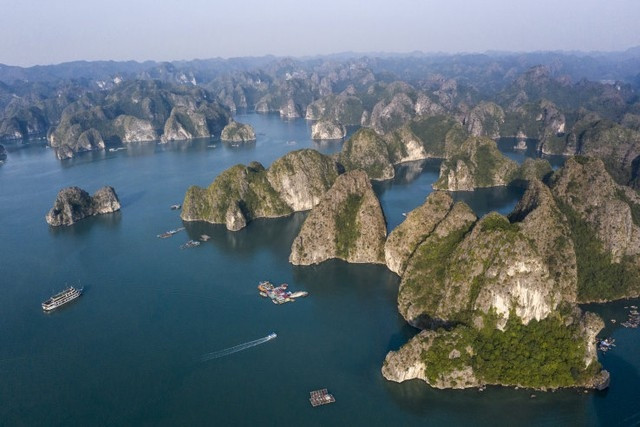

Lan Ha Bay, roughly meaning “elegant orchid”, reveals itself to be a seemingly endless waterborne wonderland composed of hundreds of weather-hewn limestone karsts straight out of central karsting.
Earlier this year UNESCO expanded the boundaries of its declaration of Ha Long Bay as a World Heritage area in 1994 to encompass the Cat Ba Archipelago, of which Lan Ha Bay forms an important part, according to author Anthony Dennis.
Enjoying a two-day trip to Lan Ha Bay was a great experience for the writer as he spent time discovering Viet Hai, a small and isolated fishing village which is gloriously sheltered by Lan Ha Bay and boasts lofty peaks above forming a beautifully bucolic valley.
The foreign traveler then went to explore the nearby Trung Trang Caves and later trekked for an hour or so through the sweaty jungles of Cat Ba National Park, a designed biosphere reserve hosting more than 1,500 species of plants, 78 species of birds, 20 species of reptiles, and 32 mammals.
The travel website also suggested that tourists should discover traditional Vietnamese herbal teas and their health benefits in a special lesson aboard the boat while venturing to discover Lan Ha Bay.
Tourists should not miss out on kayaking in and around the bay, including paddles through caves, with swimming also on offer at a secluded beach away from other tour boats, the author suggested.
Located east of Cat Ba Island off the northern port city of Hai Phong, Lan Ha Bay has become a tourist magnet thanks to its unique beauty.
Linking Ha Long Bay of Quang Ninh province with Cat Ba archipelago, Lan Ha Bay is like a silk ribbon made from green mountains, boasting blue sea with diverse fauna and flora. It is a tranquil, curved body of water featuring about 400 islands.
The bay spreads more than 7,000 hectares, including 5,400 hectares under the management of Cat Ba National Park.
Aside from plenty of beautiful beaches, its attractiveness also lies in the limestone mountain ranges which divide the sea into smaller bays, as well as its lagoons and caves, many of which are unexplored.
Source: VOV